#Central Island National Park wildlife
Text
top 10 reasons to visit Lake Turkana
Wondering about the top 10 best Reasons to visit Lake Turkana? Lake Turkana, also known as the “Jade Sea,” is a truly unique and breathtaking destination. Located in northern Kenya, this massive saltwater lake is home to a diverse array of flora and fauna, making it a must-visit destination for any nature lover. From its stunning landscapes to its rich cultural history, there are so many reasons…

View On WordPress
#Central Island National Park wildlife#Cultural history of Lake Turkana#Ethiopia#Fossil sites in Kenya#Hot air balloon ride over Lake Turkana#Jade Sea vacation#Kenya#Kenya nature tourism#Koobi Fora Museum paleontology#Lake Turkana cultural groups#Lake Turkana travel#Local delicacies of Lake Turkana#Northern Frontier District national parks#Outdoor activities at Lake Turkana#Relaxation at Lake Turkana#Trade route history of Lake Turkana#Wildlife safari in Northern Frontier District
2 notes
·
View notes
Text

Good story from Yale Environment 360, without a paywall (I think), about beavers, public land, wildfires, endangered species, the largest beaver dam in the world, the degradation of that land and the large pond behind the dam due to the tar sands mining activity in the vicinity. In other words, a microcosm of all the bad stuff and good stuff intersecting in one place in Canada. Excerpt from this story:
Wood Buffalo National Park, the largest national park in Canada, covers an area the size of Switzerland and stretches from Northern Alberta into the Northwest Territories. Only one road enters it from Alberta, and one from the NWT. If not for people observing it from airplanes and helicopters, and satellites photographing it, little would be known about big parts of it. The park is a variety of landscapes — boreal swamps, fens, bogs, black spruce forests, salt flats, gypsum karst, permafrost islands, and prairies that extend the continent’s central plains to their northern limit. The wood buffalo in the park’s name are bison related to the Great Plains bison. In this remoteness, the buffalo descend from the original population, and the wolves that prey on them are also the wild originals. Millions of birds summer and breed here. The park holds one of the last remaining breeding grounds of the whooping crane.
Other superlatives and near-superlatives: the delta in the park’s southeast where the Peace River and the Athabasca River come together is one of the largest freshwater deltas in the world; last summer, some of Canada’s largest forest fires burned in the park and around it; and — just inside the park’s southern border — is the largest beaver dam in the world.
The dam is about a half-mile long and in the shape of an arc made of connected arcs, like a recurve bow. The media has known about it for 16 years, and in that time no bigger beaver dam has come to light, so it’s still known as the biggest, and scientists believe it almost certainly is. Animal technology created it, but human technology revealed it.
Many of the beavers that have reestablished themselves globally are descended from beavers that were planted by wildlife biologists. The thriving beaver population of Tierra del Fuego (another place Thie has studied) is descended from beavers brought to Argentina from Canada’s Saskatchewan River, who are themselves scions of beavers transplanted from upstate New York. No reintroduction of beavers was done in Wood Buffalo Park. Thie believes that the beavers who built the dam are of original stock. Like the wood buffalo and the wolves, they were too remote to be wiped out.
The park is suffering the worst drought in its history. Flows are down by half in many places, owing to climate change, water diversion, poor seasonal snowpack, and dams on the Peace River, upstream in British Columbia. A danger that seems inescapable comes from the oil sands that are being mined for crude-oil-containing bitumen, and from tailing ponds that hold trillions of liters of mine-contaminated water. The ponds are near the banks of the Athabasca River, just upstream from the park boundary. They are fatal to birds that land on them. Given the direction that water flows, conservationists and native people fear the tailings will pollute the park eventually. Toxic chemicals have already been found in McClelland Lake, just southeast of the park. Locals stopped taking their drinking water from the lake years ago.
Gillian Chow-Fraser, the boreal program manager for the Northern Alberta chapter of the Canadian Parks and Wilderness Society, in Edmonton, travels in the park often by helicopter, canoe, and foot. She has described the park’s environment as “super degraded.” When I spoke with her by phone not long ago, she talked about a recent tailing basin leak that was not reported to the First Nations downstream of it for nine months. In places that used to flood regularly but now don’t, the land is drying out and vegetation disappearing. Though she crisscrosses the park, she has never seen the world’s largest beaver dam, but she’s grateful that it’s there and bringing the park attention.
35 notes
·
View notes
Text
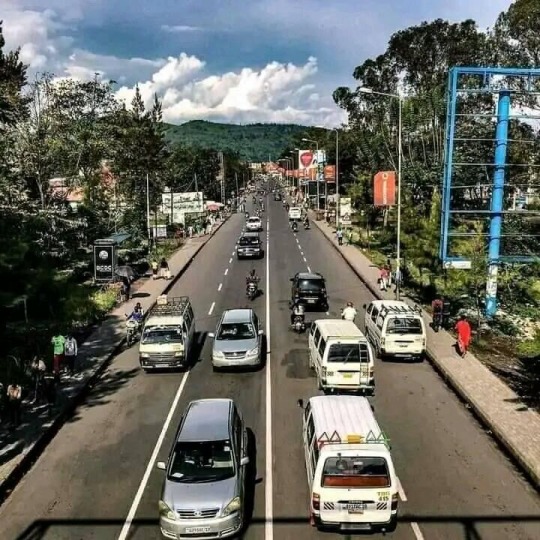
DR Congo 🇨🇩
Facts about DR Congo, the richest Country with Natural Resources in the world 🇨🇩
1. Music is its biggest export
2. Kinshasa is world's second largest French speaking city.
3. Locals eat mayo with everything
4. Kinshasha and Brazaville are the world's closest capitals.
5. The Wildlife is Phenomenal
6. The Congo isn't overrun by the Ebola Virus
7. Congo played a role in World War II
8. DRC is one of the Countries in East and Central Africa where one can find the Mountain Gorillas and the Eastern Lowland Gorillas.
9. The Democratic Republic of the Congo is the second largest country in Africa. It borders nine countries: Angola, Burundi, the Central African Republic, the Republic of Congo, Rwanda, South Sudan, Tanzania, Uganda, and Zambia.
10. The people of the DRC represent over 200 ethnic groups, with nearly 250 languages and dialects spoken throughout the Country.
11. DRC has more than 450 tribes , one of biggest hydro dam in the world, the biggest stock of water, second large river in the world, second biggest forest after amazonia, has the oldest and biggest park in Africa( virunga), is the only one country in the world with okapi animal, biggest world s minerals's stuff: copper, lithium, cobalt, gold, coltan, cassiterite, nobium, gold, diamond, uranium.., one of the peaceful and kind population in the world, hiroshima & Nagasaki nuclear bomb were made by uranium from the south EST of DRC, has the second biggest island in africa( Idjwi, island) second deepest lake in the world after baikal lake in Russia, 12 national parks with all types of wild animals,. and so on
16 notes
·
View notes
Text
Certainly! Here's a list of some of the world's best places to visit:
1. **Paris, France**: Known as the City of Love, Paris is famous for iconic landmarks like the Eiffel Tower, Louvre Museum, and Notre-Dame Cathedral.
2. **Rome, Italy**: Home to ancient ruins like the Colosseum and the Roman Forum, as well as Vatican City and St. Peter's Basilica.
3. **Kyoto, Japan**: Rich in history and culture, Kyoto is filled with beautiful temples, traditional tea houses, and stunning gardens.
4. **New York City, USA**: The Big Apple offers a mix of culture, art, food, and entertainment, with attractions like Times Square, Central Park, and the Statue of Liberty.
5. **Machu Picchu, Peru**: This ancient Incan city nestled in the Andes Mountains offers breathtaking views and a glimpse into the region's rich history.
6. **Santorini, Greece**: Famous for its white-washed buildings with blue domes, stunning sunsets, and crystal-clear waters, Santorini is a picturesque island paradise.
7. **Great Barrier Reef, Australia**: One of the world's most spectacular natural wonders, the Great Barrier Reef is a haven for snorkelers and divers.
8. **Serengeti National Park, Tanzania**: Known for its vast plains and diverse wildlife, including the Big Five, the Serengeti offers unforgettable safari experiences.
9. **Marrakech, Morocco**: With its bustling medinas, vibrant souks, and stunning architecture, Marrakech is a feast for the senses.
10. **Iguazu Falls, Argentina/Brazil**: This awe-inspiring natural wonder consists of 275 individual waterfalls and spans the border between Argentina and Brazil.
11. **Dubai, UAE**: A modern marvel with skyscrapers, luxury shopping, and desert adventures, Dubai is a city of contrasts.
12. **Banff National Park, Canada**: Majestic mountain landscapes, turquoise lakes, and abundant wildlife make Banff a must-visit destination for nature lovers.
13. **Bora Bora, French Polynesia**: Famous for its overwater bungalows and pristine beaches, Bora Bora is the ultimate tropical getaway.
14. **Angkor Wat, Cambodia**: The largest religious monument in the world, Angkor Wat is a stunning example of Khmer architecture and a UNESCO World Heritage site.
15. **Rio de Janeiro, Brazil**: Known for its lively carnival, iconic beaches like Copacabana and Ipanema, and the towering Christ the Redeemer statue overlooking the city.
These are just a few of the countless amazing places to visit around the world, each offering its own unique charm and experiences.
#best places to visit#best places to travel#good place#top places#the mandalorian#super mario#across the spiderverse#the owl house#ted lasso#donald trump#yellowjackets#wally darling#rwby#taylor swift
7 notes
·
View notes
Text
10 National Parks To Avoid The Summer Crowds
From rugged hiking trails to pristine beaches, upgrade your summer at these under-the-radar wilderness areas.
— By Elizabeth Kwak-Hefferan | June 2, 2023

Two spelunkers explore Lechuguilla Cave—currently reserved for scientific research—in Carlsbad Caverns National Park, home to some of the deepest, largest, and most ornate caverns in the U.S. Photograph By Robbie Shone, National Geographic Image Collection
The most popular national parks in the U.S. such as Yellowstone and the Grand Canyon attracted record crowds last summer. For some, it might be worth fighting traffic or walking packed trails to see the towering granite monoliths in Yosemite or fireflies in Great Smoky Mountains. But, there are 63 national parks across the country, many with far fewer visitors—and just as many hikes with epic views, wildlife-spotting opportunities, and kid-friendly excursions.
Here are 10 of the country’s least trafficked parks, plus what to see and do in them.
Best Water Excursions: Channel Islands National Park, California
Hikers and kayakers find ample ways to explore this constellation of five wild islands off the coast of Santa Barbara. Beginner-friendly paddling trips, like the one from Scorpion Anchorage on Santa Cruz Island, let visitors take in abundant sea caves, kelp forests, and wildlife such as gray whales, dolphins, and sea lions. Strong currents and shifting weather make going with a guide a smart move.
Remote islands like Santa Rosa have hiking trails through rugged mountains with glimpses of wildlife, including tiny, endemic island foxes, at dawn and dusk. Spend the night at Santa Cruz Island’s only lodging option, Scorpion Canyon Campground, a half-mile hike from the beach.

Composed of five tectonically formed islands and surrounded by an extensive marine sanctuary, Channel Islands National Park offers dramatic sea views, epic wildlife watching, and scenic hikes. Photograph By Robert Schwemmer/Alamy Stock Photo
Voyageurs National Park, Minnesota
More than a third of this Northwoods network of boreal forests and rocky islands is covered by water—four huge lakes plus 26 smaller ones. New environmental protections make now an ideal time to experience these waterways via a tour boat, canoe, or kayak. Easy-access shoreline campsites line the park’s major lakes, but the wildest, quietest destinations sit deep in the interior of the Kabetogama Peninsula. Reserve a backcountry campsite along the Chain of Lakes or on the central peninsula’s waters, where your only companions for a spectacular aurora borealis show will be the loons and moose.
Best Wildlife Viewing: Kenai Fjords National Park, Alaska
This coast-meets-mountains reserve takes wildlife watching to the next level. Use the park’s only maintained long trail to the outlook over Harding Icefield for breathtaking panoramic views of this expansive, icy landscape. Along the way, keep an eye out for grizzlies, black bears, wolverines, lynx, wolves, and mountain goats. From a kayak or tour boat, look out for orcas, humpback whales, and dolphins among the waves and Steller sea lions and harbor seals on the beaches
Carlsbad Caverns National Park, New Mexico
Brazilian free-tailed bats are a star attraction at this Chihuahuan Desert park. Each year, these flying critters make their way back from their winter grounds in Mexico to roost in the park’s intricate network of limestone caves. August and September bring the best bat watching when the year’s babies take to the skies with their parents. Around sunset, the bats spiral out of the cavern’s Natural Entrance by the hundreds of thousands to eat insects.
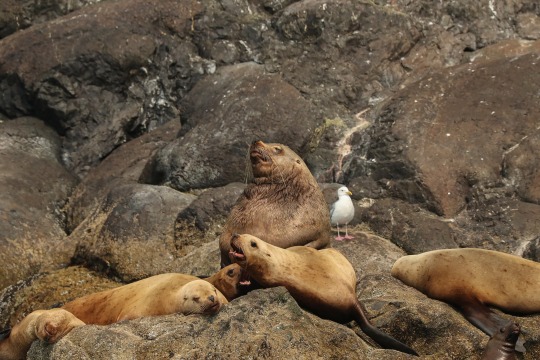

Top: The glacial landscapes and coastal waters of Alaska’s Kenai Fjords National Park provide ideal conditions for viewing wildlife, like these Steller sea lions pictured. Photograph By Cagan Sekercioglu. Bottom: Thousands of bats spew out of a cave in Carlsbad Caverns in search of food. Photograph By Michael Nichols — National Geographic Image Collection
Best Hiking Trails: North Cascades National Park, Washington
Known as the “American Alps,” this park holds more than 400 miles of trails that take hikers and horseback riders to wildflower meadows, old-growth forests, glacier viewpoints, and remote lakes. One standout is the Desolation Peak Trail, which leads to a mountaintop lookout cabin where Jack Kerouac spent a summer. North Cascades remains well off the radar: Just over 30,000 people visited last year, a mere 2 percent of the traffic of its southern neighbor, Mount Rainier. The terrain is so remote and wild, the park is considering restoring grizzly bear populations here.
Mesa Verde National Park, Colorado
Explore the sunset-colored canyons that ancestral Pueblo people called home in Mesa Verde. Here, skillfully designed cliff dwellings, some with up to 150 rooms and large enough to house one hundred people, remain tucked into protected stone alcoves, just as they’ve been for 800 years. In summer, rangers lead hiking tours inside some of them, including Cliff Palace, the largest such village in North America, and Balcony House, which involves climbing up cliffside ladders and crawling through rock tunnels. After dark, look up. Mesa Verde’s skies are well-protected from light pollution, earning it International Dark Sky Park status in 2021.

Tourists visit the ruins of Cliff Palace in Mesa Verde National Park., Colorado.Photograph By Phil Schermeister, National Geographic Image Collection
Best Cultural Experiences: Dry Tortugas National Park, Florida
Accessible only by boat or seaplane, this park offers pristine beaches, exceptional snorkeling, and the chance to explore the historic Fort Jefferson. Located on Garden Key, the second largest of the park’s seven islands (70 miles from Key West), the military stronghold was the largest masonry fort in the Western Hemisphere during the mid-1800s. During the Civil War, it became one of the nation’s largest prisons.
Visitors who brave the two-plus-hour trip by boat or 40-minute ride by plane to get here can tour the grounds where Union prisoners (like the doctor who set John Wilkes Booth’s broken leg) were imprisoned during the Civil War. After strolling the grounds, explore Dry Tortugas’s other major attraction: superb snorkeling among coral reefs where you might see octopi, nurse sharks, reef squid, and barracudas.
Haleakalā National Park, Maui, Hawaii
More than 30 miles of trails wind over ancient lava flows and through endemic silversword patches before plunging into the summit crater of Haleakalā. Native Hawaiians consider the summit a sacred site, where they held religious ceremonies, studied the stars, and quarried basalt for centuries. On the other side of the park, visitors can still see their village ruins and fishing shrines at tropical Kipahula, an 800-year-old coastal settlement that’s now better known for its crashing waterfalls and the idyllic Seven Sacred Pools of ‘Ohe’o Gulch.

The famed Haleakalā Crater is a vast depression—but it's actually not a volcanic crater. It was formed as erosion ate away a ridgeline, joining two valleys in Haleakalā National Park. Photograph By Pete Ryan, National Geographic Image Collection


Top: To avoid crowds, visit Haleakalā summit after 3 p.m.; its sunsets can be as spectacular as its famous sunrises. Bottom: Erected in 1958, the Haleakalā Observatory is Hawaii’s first astronomical research planetarium. — Photographs By Babak Tafreshi, National Geographic Image Collection
Best For Family: Indiana Dunes National Park, Indiana
Kids will find more than just a day at the beach in this welcome pocket of nature amidst the nearby bustle of Chicago, a 45-minute drive away. An impressively diverse number of ecosystems in this compact park let families explore wetlands, oak savannas, pine forests, prairies, and 15 miles of sandy shoreline in a day.
There are also opportunities for kayaking the coast of Lake Michigan or canoeing the Little Calumet River (the park was upgraded from national lakeshore status in 2019). The in-progress Indigenous Cultural Trail features murals and interpretive signs that teach about the Pokagon Band of Potawatomi and the Miami Tribe of Oklahoma, two of the area’s original peoples.


Top: Mammoth Cave—Kentucky’s only national park—contains more than 400 miles of caves, making it the longest cave system in the world. Photograph By Phil Schermeister, National Geographic Image Collection Bottom: Park visitors stand up paddle board along the Grand Calumet River on the outskirts of Lake Michigan in Indiana Dunes National Park. Photograph By Keith Ladzinski, National Geographic Image Collection
Mammoth Cave National Park, Kentucky
Escape the summer heat by exploring a labyrinth of underground caverns that maintain a refreshing temperature of 54°F year-round. To see the caves, you’ll have to take a ranger-guided tour. These vary in difficulty, with options for families with young kids to enjoy the stunning stalagmites, stalactites, and tunnels. Or for the older kids, try the longer, more challenging tours by lantern light.
During the guided tours, park rangers point out remnants of early inhabitants’ mining activity dating back to 1200 B.C. and tell the stories of enslaved Black cave guides from the 1830s and the “Cave Wars” between rival tourism developers in the early 1900s.
4 notes
·
View notes
Text
Top 8 Natural Tourist Locations in Malawi by Satguru Travel
The mesmerising beauty of the landlocked country Malawi in the southeast part of Africa will leave you speechless once you visit. A wide range of agriculturists living here makes this place a heaven for nature lovers. The top natural tourist locations in Malawi by Satguru Travel attract people from all over the world. If you are planning a trip to Africa, add Malawi to your list of places to visit and enjoy the heavenly spectacular views of nature.

1.Nkhoma Mountain
If you are taking Malawi corporate travel services and planning to hike this mountain, you must be aware of the route to the summit, which is as follows:
You will find mostly flat land during the first part of the track
Once you get past the initial trail, you will come upon a fish pond. You may spot children playing near the place.
When you are done with half the trail, you will find slight difficulty as the slope gets steeper there. You can have a view of the pond and most areas of the land while you are trekking up.
At this point, you will have a spectacular view of the summit. One can relax here as about 75% of the hike is done and you need some rest time before restarting the hike.
You will find a rocky slope near this point which is very difficult to pass. In order to clear this difficult part, you are required to use both hands and legs.
Voila! You have reached the Summit within four hours. The mesmerising view from this spot will surely make you forget the tough part of the hiking journey.
2.Mount Mulanje
Located 65 km east of Blantyre, Mount Mulanje or Mulanje Massif rises sharply from the plains of Chizardzulu and is one of the most preferred places for hiking in Malawi. One can also spend some time in the tea-growing district nearby with the same name, Mulanje. This mountain with an altitude of 3000 m is popularly called “island in the sky” by the locals. You will notice what a suitable name it is when you see the mountain enclosed in a smoke-like haze on a misty day.
Just like Nkhoma Mountain, Massif is popular among adventure lovers for hiking and climbing. The Malawi Mountain Club and Forestry Department maintains several mountain huts scattered around the mountain. Hikers can choose from a large number of trails depending on the length of stay and what summits they want to reach. People who do not want to hike can simply visit the Mulanje Forest Reserve and spend some time exploring the plant and animal species.
3.Lake Malawi National Park
Located at the southern end of Lake Malawi, this place is enlisted in the World Heritage Site and is the world’s first freshwater national park. Lake Malawi National Park includes a land area around the bay and cape together with the Lake and islands offshore. You will see a veritable aquarium of tropical fish offering a colourful kaleidoscopic display.
Lake Malawi National Park holds the record for having thousands of freshwater fish that you will not see anywhere else in the world. One can also hire a boat and feed the fish directly from the hand. You can spot baboons, hyrax, antelope, and large species of birds like cormorants, eagles, and hamerkops away from the lake, in the park.
4.Majete Wildlife Reserve
If you are visiting Malawi, do not forget to put Majete Wildlife Reserve on your list of places to visit. The continuous efforts of professionals in the protection of endangered species make Majate the most popular reserve for wildlife and safaris in Malawi. This place is located in the Lower Shire Valley, South West of Malawi.
In the 1990s, there was heavy eradication of wildlife from this region. A non-profit organization named African Parks Majete (APM) in collaboration with the Malawian government took full responsibility and rehabilitated the reserve. The restoration includes infrastructure development, wildlife stocking, scientific monitoring function, and law enforcement.
5.Dwangwa
The satellite town of Dwangwa is situated on the central shores of Lake Malawi, thirty miles north of Nkhotakota. If you are visiting the lakeshore, make sure you spend some time here apart from fuelling and stocking up. You can find good accommodation facilities in this town and enjoy some lake activities during your stay.
6.Shire River
Visiting the largest river of Malawi must be already on your list of places to visit. Shire river is the only outlet of Lake Malawi that flows directly into Mozambique’s Zambezi river. It begins from Lake Malawi and enters into shallow Lake Malombe after a 19 km (12 miles) journey; after draining Lake Malombe it flows southward towards Liwonde National Park, where you can spot hippopotami in abundance.
7.Kasungu National Park
Located on the border of Zambia and Malawi, Kasunga National Park is full of natural woodland and bush and is spread across 800 sq miles. It was one of the oldest premiere national parks in Malawi. With time, the fame of this place has been overtaken by Majete, Liwonde, and Nyika National Park. Nowadays, most visitors prefer going to Nkhotakoata Wildlife Reserve for safaris that is being managed very well. Check the website for flight booking in Malawi and spend some time in the laps of nature here.
8.Chongoni Rock Art Area
Located at the granite hills northwest of Dedza, in Central Malawi, Chongoni Rock Art Area is full of ancient rock paintings, constituting the densest rock art cluster in central Africa. From the paintings by BaTwa hunter-gatherers to rare farmer rock art, you will find every rare and beautiful painting from the Stone Age here. The symbols in the paintings have firm associations with females and are still culturally relevant to the Chewa community.
Chongoni Rock Art is a UNESCO World Heritage Site that comprises around 127 sites of which some are still active for rituals and ceremonies. The tour packages offered by top corporate travel management companies in Malawi often include a trip to this exotic location. You are less likely to find such an amazing collection of preserved ancient art and Chewa’s cultural history from their early transition as agriculturists to the arrival of colonial Europeans.
Satguru Travel is the largest travel management company in Malawi. They have certified professionals who make your travel memorable and hassle-free to enjoy your valuable time. To book a package, contact us.
#travel companies near me#corporate travel management#travel agency services#travel agency for international flights
3 notes
·
View notes
Note
Jurassic Park is a 1993 American science fiction action film[4] directed by Steven Spielberg and produced by Kathleen Kennedy and Gerald R. Molen. It is the first installment in the Jurassic Park franchise, and the first film in the Jurassic Park original trilogy, and is based on the 1990 novel of the same name by Michael Crichton and a screenplay written by Crichton and David Koepp. The film is set on the fictional island of Isla Nublar, located off Central America's Pacific Coast near Costa Rica. There, wealthy businessman John Hammond and a team of genetic scientists have created a wildlife park of de-extinct dinosaurs. When industrial sabotage leads to a catastrophic shutdown of the park's power facilities and security precautions, a small group of visitors and Hammond's grandchildren struggle to survive and escape the perilous island.
Before Crichton's novel was published, four studios put in bids for its film rights. With the backing of Universal Studios, Spielberg acquired the rights for $1.5 million before its publication in 1990; Crichton was hired for an additional $500,000 to adapt the novel for the screen. Koepp wrote the final draft, which left out much of the novel's exposition and violence and made numerous changes to the characters. Filming took place in California and Hawaii from August to November 1992, and post-production rolled until May 1993, supervised by Spielberg in Poland as he filmed Schindler's List. The dinosaurs were created with groundbreaking computer-generated imagery by Industrial Light & Magic (ILM) and with life-sized animatronic dinosaurs built by Stan Winston's team. To showcase the film's sound design, which included a mixture of various animal noises for the dinosaur roars, Spielberg invested in the creation of DTS, a company specializing in digital surround sound formats. The film also underwent an extensive $65 million marketing campaign, which included licensing deals with over 100 companies.
Jurassic Park premiered on June 9, 1993, at the Uptown Theater in Washington, D.C., and was released on June 11 in the United States. It went on to gross over $914 million worldwide in its original theatrical run,[5] becoming the highest-grossing film ever at the time, a record held until the release of Titanic in 1997.[6] It received positive reviews from critics, who praised its special effects and Spielberg's direction.[7] Following its 20th anniversary re-release in 2013, Jurassic Park became the oldest film in history to surpass $1 billion in ticket sales and the seventeenth overall. The film won more than twenty awards, including three Academy Awards for its technical achievements in visual effects and sound design. In 2018, it was selected for preservation in the United States National Film Registry by the Library of Congress as being "culturally, historically, or aesthetically significant". The film was followed by five sequels – The Lost World: Jurassic Park (1997), Jurassic Park III (2001), Jurassic World (2015), Jurassic World: Fallen Kingdom (2018), and Jurassic World Dominion (2022).
woag..... dinosaurs.......
4 notes
·
View notes
Text
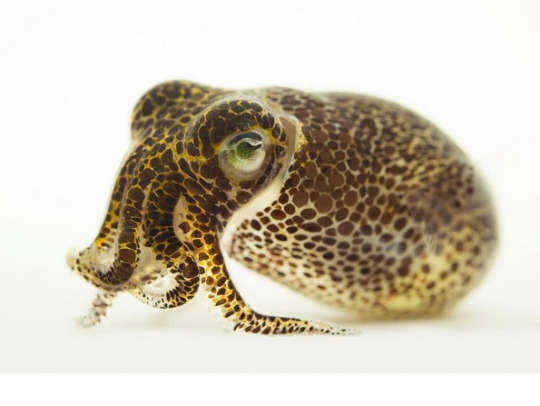


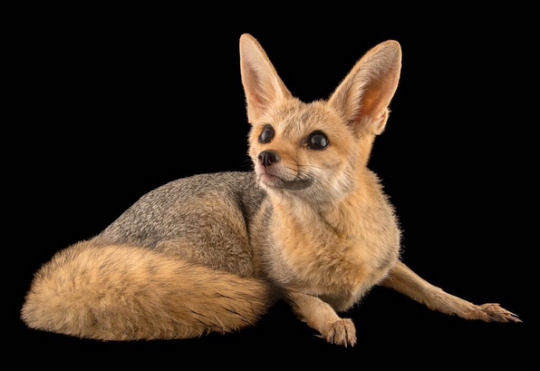
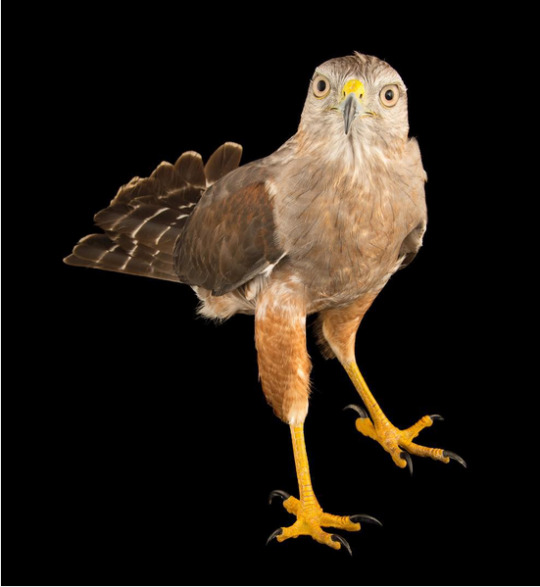



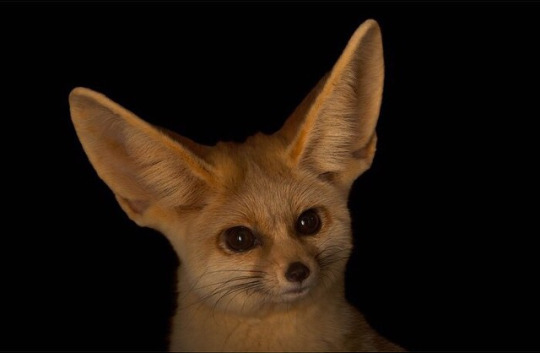

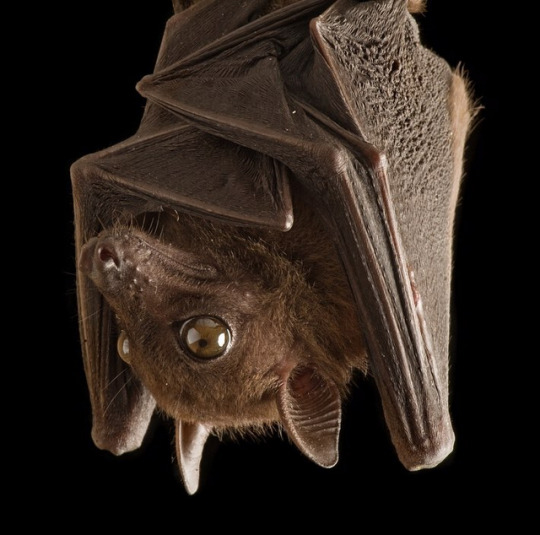
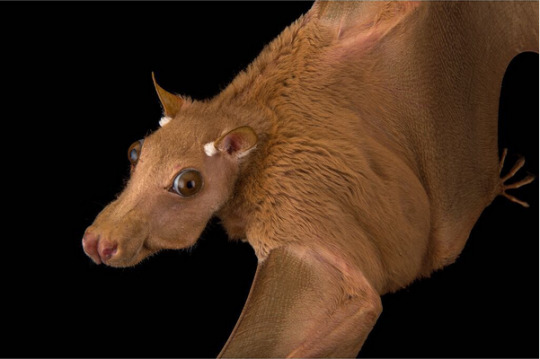
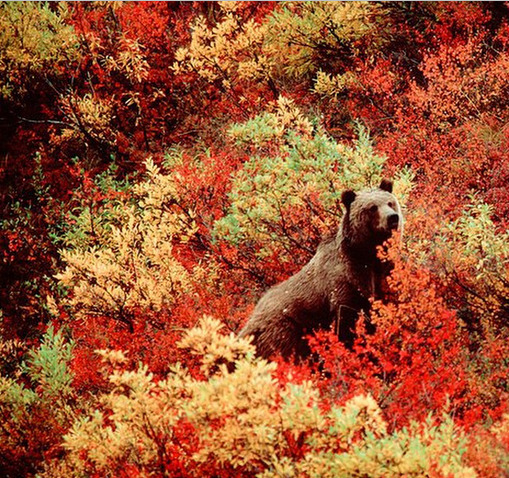


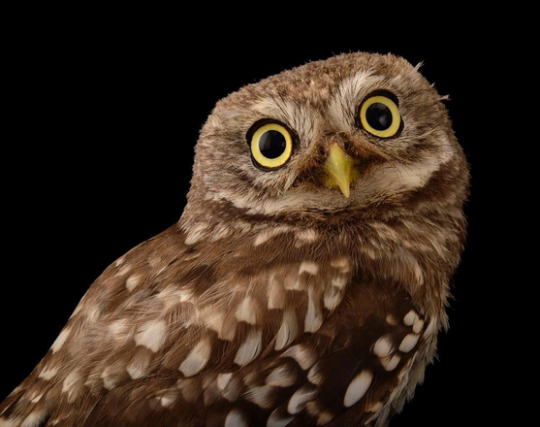
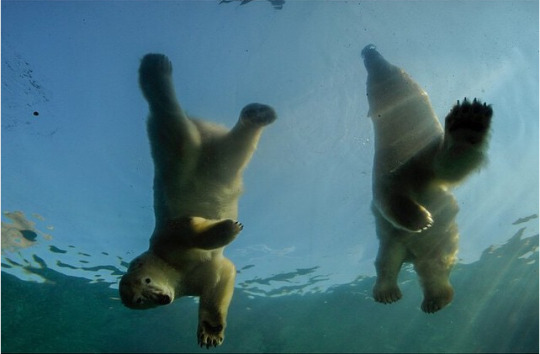


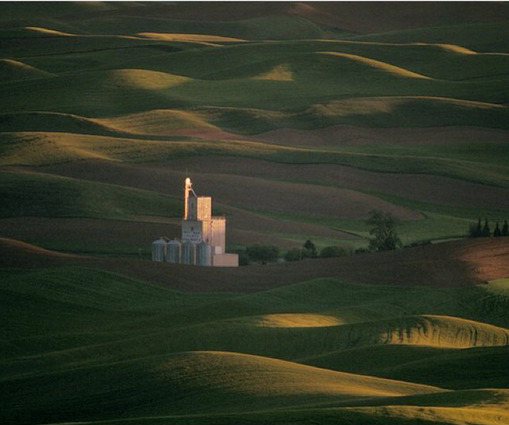

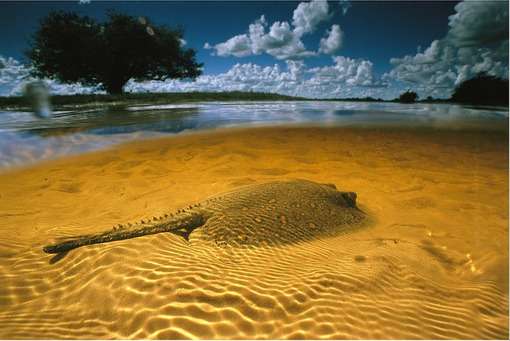

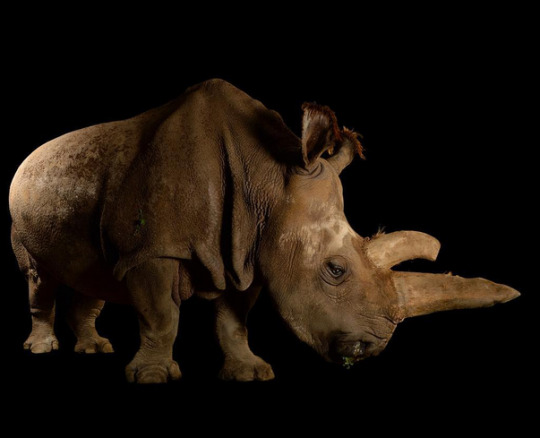

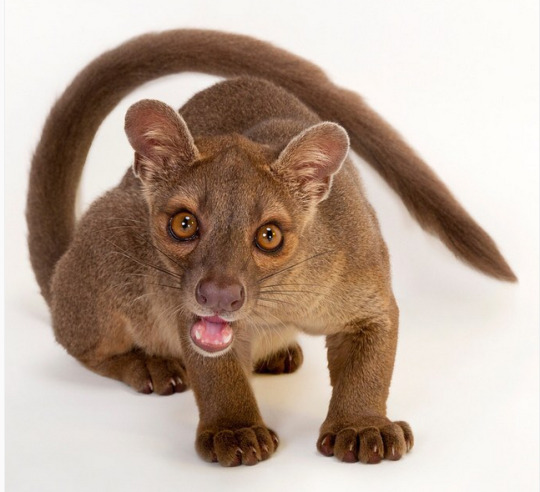
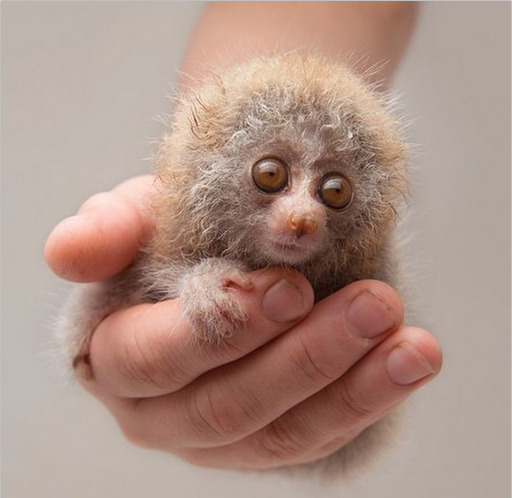
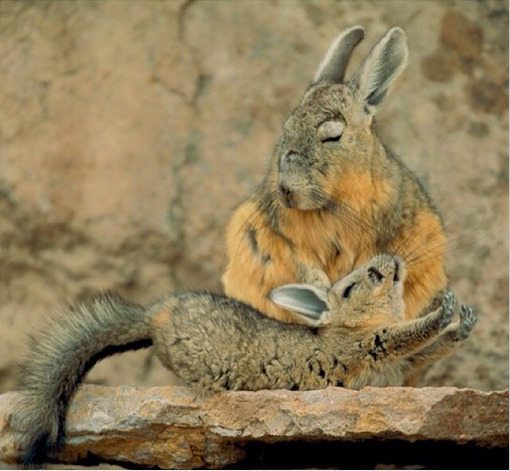


Photos and texts: @joelsartore
1-. A bobtail squid at the Monterey Bay Aquarium
2-. A breeding pair of endangered Limosa harlequin frogs at the Panama Amphibian Rescue and Conservation Project
3-. A brown-throated sloth at the PanAmerican Conservation Association in Gamboa, Panama
4-. A Cape fox at the Plzen Zoo in the Czech Republic
5-. A critically endangered Ridgeway's hawk from my trip to the Dominican Republic
6-. A critically endangered, six-week-old female baby gorilla at the Cincinnati Zoo
7-. A endangered Matschie's tree kangaroo at the Lincoln Children's Zoo
8-. A federally endangered yellow-footed rock wallaby at Omaha Zoo's Wildlife Safari Park
9-. A fennec fox named Sophie at Chattanooga Zoo
10-. A four-toed jerboa at the Plzen Zoo in the Czech Republic
11-. A fruit bat from Bioko Island, Equatorial Guinea
12-. A Gambian epauletted fruit bat at the Plzen Zoo in the Czech Republic
13-. A grizzly bear in fall color at Denali National Park, in Alaska's interior
14-. A horse at the Sandal Ranch near Howes, South Dakota
15-. a kinkajou at the New York State Zoo. This animal is naive to Central and South America
16-. A little owl from the Budapest Zoo
17-. Polar bears at the Columbus Zoo
18-. Rajah, an endangered male, white Bengal tiger at Alabama Gulf Coast Zoo
19-. Ridgeway's hawk
20-. The view of the Palouse hills as seen from Steptoe Butte in eastern Washington
21-. Twin three month old red pandas at the Lincoln Children's Zoo
22-. a freshwater stingray lies partially hidden in the sand of a flooded country road in Brazil's Pantanal
23-. A king penguin rookery from South Georgia Island's St. Andrews Bay
24-. Nabire, one of just five northern white rhinos left on the planet. RIP
25-. jaguarundi
26-. A 1-year-old fossa as the Omaha Zoo. This is Madagascar's largest mammalian predator, and its numbers are declining in the wild
27-. a 24 day-old bengal slow loris at the Endagered Primate Rescue Center in Vietnam. Is named Captain Hook, because he is missing a hand
28-. baby viscacha stretches out after a nap with mom in Chile's Atacama Desert
29-. A black swallowtail butterfly, wich is native to Nebraska, at the Lincoln Children's Zoo
1 note
·
View note
Text
Top 5 Places to visit in june new zealand


Christchurch, located on New Zealand’s South Island, is renowned for its English heritage and vibrant cultural scene. This picturesque city, known as the “Garden City,” boasts an array of attractions that cater to diverse interests. Among the top places to see in Christchurch are the stunning Botanic Gardens, which offer a peaceful retreat with a variety of plant species and beautifully landscaped grounds.
The Christchurch Art Gallery is a must-visit for art enthusiasts, showcasing an impressive collection of national and international works. For a glimpse into the city’s history, the Canterbury Museum provides fascinating exhibits on natural history and cultural heritage.
Hagley Park, the city’s largest urban open space, is perfect for leisurely strolls, picnics, and sports activities. The iconic Avon River, which meanders through the city, offers punting tours that provide a unique perspective of Christchurch’s scenic beauty.
Quake City, an interactive museum, educates visitors about the 2010 and 2011 earthquakes that significantly impacted the region. Additionally, the innovative and colorful Cardboard Cathedral stands as a symbol of the city’s resilience and creativity. https://www.nzetaonlinevisa.com/

Wellington, the capital city of New Zealand, is a vibrant cultural hub nestled between rolling hills and a picturesque harbor. Known for its dynamic arts scene, Wellington boasts a plethora of museums, theaters, and galleries that showcase both contemporary and traditional works. One of the must-visit places to see in Wellington is the iconic Te Papa Tongarewa, the national museum that offers interactive exhibits and rich Maori cultural displays. Another highlight is the Wellington Cable Car, which provides panoramic views of the city and leads to the beautiful Botanic Garden, a serene escape from the urban bustle. https://www.nzetaonlinevisa.com/

Dunedin, located on the southeast coast of New Zealand’s South Island, is a city rich in history and natural beauty. Known for its Scottish heritage, Dunedin boasts a unique blend of Victorian and Edwardian architecture. Among the top places to see in Dunedin is the iconic Larnach Castle, the only castle in New Zealand, offering stunning views and lush gardens. The Otago Peninsula is another must-visit, famous for its diverse wildlife, including albatrosses, sea lions, and rare yellow-eyed penguins.
Dunedin’s city center is home to the historic Dunedin Railway Station, often dubbed the most photographed building in the country, and the bustling Octagon, a central plaza surrounded by shops, cafes, and the magnificent St. Paul’s Cathedral. Art enthusiasts will appreciate the Dunedin Public Art Gallery, which houses an impressive collection of national and international artworks. https://www.nzetaonlinevisa.com/

Wanaka, a picturesque town in New Zealand’s South Island, is renowned for its stunning natural beauty and vibrant outdoor activities. Nestled at the southern end of Lake Wanaka and surrounded by majestic mountains, it offers an idyllic retreat for nature lovers and adventure seekers alike. Among the must-visit places to see in Wanaka is the iconic Wanaka Tree, a solitary willow that stands in the lake, providing a perfect photo opportunity.
Visitors can explore the pristine beauty of Mount Aspiring National Park, a UNESCO World Heritage site, ideal for hiking, climbing, and spotting diverse wildlife. Roys Peak offers a challenging trek with rewarding panoramic views of the lake and surrounding mountains. For those interested in more leisurely activities, Puzzling World, with its quirky illusions and maze, provides fun for all ages. https://www.nzetaonlinevisa.com/
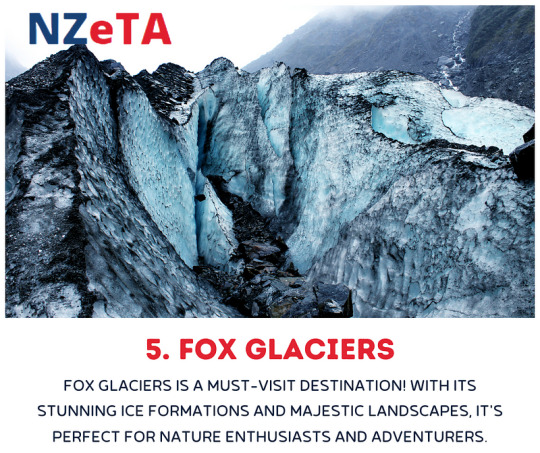
Fox Glacier, located in Westland Tai Poutini National Park on New Zealand’s South Island, is a stunning natural wonder that draws visitors from around the world. Known for its breathtaking ice formations and dynamic landscape, Fox Glacier descends from the Southern Alps down into the temperate rainforest, creating a unique juxtaposition of ice and greenery.
One of the prime places to see in Fox Glacier is the glacier itself, which can be explored through guided tours offering a closer look at the crevasses and ice caves. Visitors can also experience scenic helicopter flights that provide a bird’s-eye view of the glacier and the surrounding mountains.
Lake Matheson is another must-visit spot near Fox Glacier. Famous for its mirror-like reflections of Mount Cook and Mount Tasman, the lake offers picturesque walking trails and stunning photography opportunities. Additionally, the Fox Glacier Valley Walk provides a relatively easy hike with dramatic views of the glacier’s terminal face.
For those seeking more adventure, the nearby Gillespies Beach offers rugged coastline and the chance to explore historic gold mining sites. With its diverse range of attractions, Fox Glacier is a captivating destination, making it one of the top places to see in New Zealand. https://www.nzetaonlinevisa.com/
#newzealand#junetravel#explorenewzealand#VisitNZeTA#traveldestinations#NewZealandAdventure#DiscoverNZ#TravelNewZealand#JuneGetaways#MustVisitNZ
0 notes
Text
Travel To Guinea Equatorial – Plan The Best Trip For You
Equatorial Guinea, an often-overlooked gem on the west coast of Central Africa, is a destination that promises unique adventures and unforgettable experiences. This small yet diverse country is packed with pristine beaches, lush rainforests, and a rich cultural heritage.
Whether you are an intrepid explorer or a laid-back traveler, the tourist destinations in equatorial guinea has something for everyone.
Malabo -The vibrant capital
Start your travel to Guinea Equatorial in Malabo, the capital city located on Bioko Island. Malabo is a city where old meets new, with its blend of colonial architecture and modern buildings.
Santa Isabel Cathedral - This Gothic-style cathedral is a stunning architectural masterpiece and a symbol of Malabo.
Malabo National Park - Perfect for a leisurely stroll, this park offers green spaces and a serene lake.

Cultural Center of Spain - Discover exhibitions, performances, and events that showcase local and Spanish culture.
Bioko Island - Nature’s paradise
Just outside Malabo, Bioko Island offers natural beauty and wildlife.
Pico Basilé - The highest peak in Equatorial Guinea, offering breathtaking views of the island. A guided hike here is a must for adventure enthusiasts.
Arena Blanca - Known for its unique white sand, this beach is ideal for relaxation and swimming.
Moka Valley - A haven for biodiversity, the valley is perfect for hiking and spotting rare species.
Bata - The Cultural Heartland
On the mainland, Bata is the largest city and a hub of cultural and commercial activities.
St. James and Our Lady of Carmel Cathedrals - These impressive churches are architectural marvels.
Bata Market - Dive into the local culture by exploring this bustling market filled with fresh produce, crafts, and textiles.
Mbini River - Take a boat trip along this scenic river, which offers beautiful views and opportunities for bird watching.
Monte Alen National Park - Wildlife Wonderland
Monte Alen National Park is one of must-visit tourist destinations in equatorial guinea for nature lovers. This park is a biodiversity hotspot, home to an array of wildlife and lush tropical rainforests.
Jungle Treks - Explore the dense forests with a knowledgeable guide who can point out the park’s diverse flora and fauna.
Wildlife Safaris - Spot gorillas, chimpanzees, and elephants in their natural habitats.
Waterfalls - Hike to hidden waterfalls and take a refreshing dip in natural pools.
Corisco and Annobón Islands - Beach Bliss
For a tranquil escape, the islands of Corisco and Annobón offer some of the most beautiful and secluded beaches in Central Africa.
Pristine Beaches - Relax on untouched sandy shores, perfect for sunbathing and swimming.
Snorkeling and Diving -Discover vibrant coral reefs and diverse marine life in crystal-clear waters.
Fishing Excursions -Enjoy a day out at sea, fishing in the rich coastal waters.
The travel to Guinea Equatorial is an unexplored treasure, offering a perfect blend of adventure, culture, and natural beauty. From the vibrant streets of Malabo to the serene beaches of Annobón, every corner of this country has something unique to offer.
#travel to guinea equatorial#tourist destination in equatorial guinea#malabo vacation packages#equatorial guinea tourism
0 notes
Link
#croatia#europe#KornatiNationalPark#KrkaNationalPark#MljetNationalPark#nationalpark#PaklenicaNationalPark#PlitviceLakesNationalPark#RisnjakNationalPark
0 notes
Text
What is the best itinerary to travel Assam?
The Best Itinerary to Travel Assam
Assam, a gem in northeastern India, boasts lush landscapes, vibrant culture, and diverse wildlife. Here’s an ideal itinerary to help you explore the best of Assam, ensuring you don’t miss any highlights.
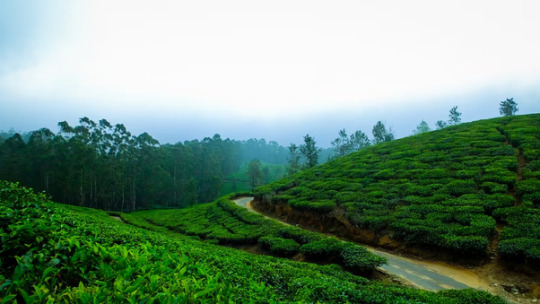
Day 1: Guwahati
Begin your adventure in Guwahati, the largest city in Assam. Start by visiting the Kamakhya Temple, one of the most significant Hindu pilgrimage sites. This temple, located on the Nilachal Hill, offers stunning views of the city and the Brahmaputra River. In the evening, enjoy a relaxing boat ride on the Brahmaputra, soaking in the picturesque sunset. Conclude your day by exploring local markets and tasting authentic Assamese cuisine at a local restaurant.
Day 2: Kaziranga National Park
Next, head to Kaziranga National Park, a UNESCO World Heritage Site famous for its one-horned rhinoceroses. Check into a comfortable lodge or resort near the park. Spend the afternoon on a jeep safari through the central range of the park, where you can spot rhinos, elephants, and a variety of bird species. In the evening, enjoy a cultural program featuring traditional Assamese dance and music, providing a perfect end to your day.
Day 3: More of Kaziranga National Park
Start your day with an early morning elephant safari to explore different areas of Kaziranga and get closer to its wildlife. After lunch, visit a nearby tea estate and learn about the tea production process. Tea is integral to Assam’s identity, and this visit offers a unique insight into the region’s tea culture. Return to your lodge and relax, perhaps by a bonfire under the stars.
Day 4: Jorhat
Travel to Jorhat, known as the tea capital of Assam. Here, visit the historic Thengal Manor, a colonial-era bungalow that offers a glimpse into Assam’s past. Take a tour of a tea estate and factory, and enjoy a tea tasting session. Exploring Jorhat gives you a deeper understanding of Assam’s tea industry and its historical significance.
Day 5: Majuli Island
Majuli Island, the world's largest river island, is your next destination. A ferry ride from Neemati Ghat takes you to this serene and culturally rich island. Visit the Satras (Vaishnavite monasteries) to learn about the island’s spiritual heritage. Interact with local artisans who are renowned for their pottery, handloom, and mask-making. Spend the night in a traditional guesthouse on the island, experiencing the simple yet rich lifestyle of Majuli.
Day 6: Sivasagar
Proceed to Sivasagar, the historical capital of the Ahom Kingdom. Here, explore the Rang Ghar, an ancient amphitheater, and Talatal Ghar, an underground palace. The Sivasagar Sivadol, a group of temples, is also a must-visit, showcasing stunning architecture and historical significance. Wander through the local markets to sample some Assamese street food and buy souvenirs.
Day 7: Return to Guwahati
Return to Guwahati for your final day in Assam. Visit the Assam State Museum to delve deeper into the state’s history and culture. Take a trip to the Umananda Temple on Peacock Island, the smallest inhabited river island in the world. This temple is dedicated to Lord Shiva and offers a tranquil retreat. Spend your last evening shopping for mementos and enjoying a farewell dinner at a traditional Assamese restaurant.
To enhance your travel experience, consider booking through reliable providers Purvi Discovery . Whether you're interested in wildlife, culture, or history.
By following this itinerary, you'll experience the best of Assam’s natural beauty, cultural richness, and historical significance. Booking through Purvi Discovery will ensure a smooth and enriching travel experience, allowing you to focus on creating unforgettable memories.
0 notes
Text
7 Tourist Spots In Australia That Are Perfect For EVs
Australia is a land of awe-inspiring landscapes and vibrant cities, each offering a unique blend of natural beauty and modern convenience. This combination makes it an ideal destination for those who prefer to travel using environmentally friendly vehicles. With the advent of car park ev charger installation Sydney technology, more travellers are looking to explore this stunning continent while maintaining a minimal carbon footprint. In this context, certain destinations stand out, providing not only breathtaking views and unique experiences but also supporting a green journey.
As you plan your adventure down under, consider the locations below that align perfectly with the needs of the eco-conscious visitor. Each spot has been selected for its accessibility, amenities, and commitment to sustainability, ensuring that your travel choices help preserve the beauty of these locales for future generations. Whether you're a nature lover, a culture enthusiast, or simply in search of relaxation, these destinations cater to all, while aligning with the principles of ecological responsibility.
The Great Ocean Road, Victoria
The Great Ocean Road offers one of the most scenic drives in the world, winding alongside the wild and windswept Southern Ocean. This 243-kilometre journey begins in Torquay and ends in Allansford. Along the way, you can witness the majestic Twelve Apostles, the ancient rainforests of Otway Ranges, and the charming seaside towns of Apollo Bay and Port Fairy. The route is well-suited for sustainable vehicles, with numerous facilities along the way that support green travel initiatives.
Blue Mountains, New South Wales
Just a short drive from the heart of a major city, the Blue Mountains are a paradise for nature lovers. Known for its dramatic scenery, it features cliffs, eucalyptus forests, waterfalls, and villages dotted with guesthouses, galleries, and gardens. This area is perfect for leisurely drives, with plenty of stops for bushwalking or picnicking, all within reach of supportive amenities for eco-friendly vehicles.
Margaret River, Western Australia
Renowned for its wine production, Margaret River is also a haven for surfers, adventurers, and food enthusiasts. This region is not just about premium wineries but also boasts spectacular caves, towering forests, and pristine beaches. The accessibility of this area makes it a fantastic spot for those who use sustainable vehicles, ensuring that you can explore extensively without leaving a heavy environmental footprint.
Kangaroo Island, South Australia
Kangaroo Island is a natural sanctuary for wildlife and natural habitats. Here, you can see sea lions at Seal Bay, admire the remarkable rocks and explore Flinders Chase National Park. The island is large but accessible, with sustainable travel options allowing you to roam widely without concern for the ecological impact.
Cradle Mountain, Tasmania
This rugged wilderness area in Tasmania's central highlands is part of the Tasmanian Wilderness World Heritage Area. Known for its jagged peaks, glacier-carved lakes, and extensive wildlife, Cradle Mountain provides a remote yet accessible experience for environmentally conscious travellers. The pristine environment is perfect for those looking to immerse themselves in nature while adhering to sustainable travel practices.
The Daintree Rainforest, Queensland
As one of the most complex ecosystems on Earth, the Daintree Rainforest is a place of extraordinary biodiversity and natural beauty. This ancient rainforest meets the Great Barrier Reef, one of the few places in the world where two UNESCO heritage sites exist side by side. The region supports eco-friendly exploration, with plenty of opportunities for guided walks and river cruises that emphasise conservation and environmental respect.
Uluru-Kata Tjuta National Park, Northern Territory
Iconic Uluru and the domes of Kata Tjuta offer a spiritual and cultural journey unlike any other. This sacred area is well-equipped for eco-friendly travellers, providing a unique insight into the ancient practices and traditions of the local Anangu people. Visitors can engage with the natural and cultural heritage of the area through walking tours and cultural centres that promote sustainable tourism practices.
Travelling to these destinations with a focus on sustainability not only enhances your experience but also contributes positively to the preservation of these natural wonders. Each location offers a unique perspective on Australia’s diverse landscape, from coastal journeys along the Great Ocean Road to the cultural depths of Uluru-Kata Tjuta. For the eco-conscious traveller, these spots provide not just a journey through physical space, but a deeper connection to the environment and a contribution to its conservation.
As the world moves towards more sustainable travel options, these destinations in Australia set a remarkable example. They not only accommodate eco-friendly vehicles but also offer comprehensive experiences that respect and celebrate the natural environment. So, pack your spirit of adventure and set off on a journey that promises beauty, excitement, and the satisfaction of knowing that your travels are in harmony with the planet.
0 notes
Text
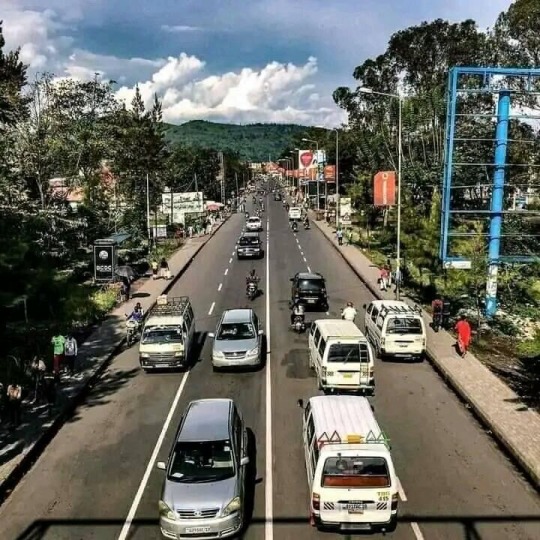
DR Congo 🇨🇩
Facts about DR Congo, the richest Country with Natural Resources in the world 🇨🇩
1. Music is its biggest export
2. Kinshasa is world's second largest French speaking city.
3. Locals eat mayo with everything
4. Kinshasha and Brazaville are the world's closest capitals.
5. The Wildlife is Phenomenal
6. The Congo isn't overrun by the Ebola Virus
7. Congo played a role in World War II
8. DRC is one of the Countries in East and Central Africa where one can find the Mountain Gorillas and the Eastern Lowland Gorillas.
9. The Democratic Republic of the Congo is the second largest country in Africa. It borders nine countries: Angola, Burundi, the Central African Republic, the Republic of Congo, Rwanda, South Sudan, Tanzania, Uganda, and Zambia.
10. The people of the DRC represent over 200 ethnic groups, with nearly 250 languages and dialects spoken throughout the Country.
11. DRC has more than 450 tribes , one of biggest hydro dam in the world, the biggest stock of water, second large river in the world, second biggest forest after amazonia, has the oldest and biggest park in Africa( virunga), is the only one country in the world with okapi animal, biggest world s minerals's stuff: copper, lithium, cobalt, gold, coltan, cassiterite, nobium, gold, diamond, uranium.., one of the peaceful and kind population in the world, hiroshima & Nagasaki nuclear bomb were made by uranium from the south EST of DRC, has the second biggest island in africa( Idjwi, island) second deepest lake in the world after baikal lake in Russia, 12 national parks with all types of wild animals,. and so on
9 notes
·
View notes
Text
How to Unveil the Magic of Lake Turkana
I. A Journey to the Jade Sea
Lake Turkana, nestled within the cradle of the Great Rift Valley in Kenya, beckons adventurous souls with its shimmering turquoise waters, dramatic landscapes, and unique cultural tapestry.
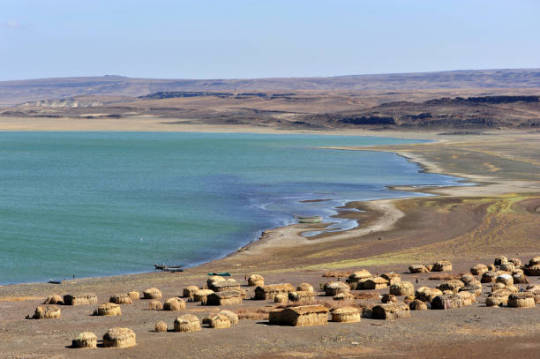
Often referred to as the "Jade Sea" for its captivating color, Lake Turkana is the world's largest permanent desert lake, a UNESCO World Heritage Site, and a haven for diverse life. Prepare to be captivated by its beauty, rich history, and unforgettable expiriences
II. Understanding the Jade Sea's Significance
Location and Geography: Lake Turkana stretches over 248 kilometers (154 miles) in length, cradled by the rugged terrain of the Great Rift Valley. This majestic lake not only holds the title of the world's largest desert lake but is also Africa's third-largest freshwater lake by volume.
Historical and Cultural Importance: Fossil discoveries around the lake reveal a fascinating human story. Evidence suggests early hominids like Homo erectus may have lived here 1.6 million years ago. The lake has also been a vital source of life and sustenance for local communities for centuries.
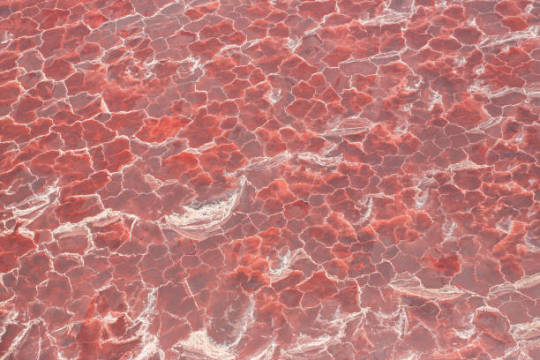
III. Planning Your Turkana Adventure
Weather and Tourist Seasons: The best time to visit Lake Turkana depends on your preferences. The dry season (December to March) offers sunshine and comfortable temperatures, perfect for wildlife viewing. If you're a birdwatching enthusiast, consider the shoulder seasons (April-May and October-November) when migratory birds abound. However, be prepared for occasional rain showers.
Reaching the Jade Sea: Lake Turkana is accessible by road or air. Several small airstrips cater to chartered flights, while a scenic road trip allows you to soak in the surrounding landscapes. Remember to check road conditions before your visit.
Permits and Permissions: Always obtain the necessary permits before embarking on your adventure. Park entrance fees are applicable, and specific permissions may be required for certain activities like fishing.

IV. A Paradise for Wildlife Enthusiasts
Diverse Wildlife: Lake Turkana is a haven for an incredible array of wildlife. The crocodile population here is the largest freshwater crocodile population in Africa. Look out for these prehistoric-looking reptiles basking on the shores. The crystal-clear waters teem with fish, including the endangered Nile perch and various colorful cichlid species. The skies above are a haven for birdwatchers, with over 400 species recorded, including flamingos, pelicans, and majestic eagles.
Wildlife Viewing and Photography: Boat tours offer exceptional opportunities to witness the resident crocodile and hippopotamus populations. Early mornings and late afternoons provide the best light for capturing stunning wildlife photographs. Central Island National Park, a volcanic island within the lake, is a paradise for birdwatchers and home to unique geological formations.

V. Engaging with the Jade Sea
Water Activities: The lake beckons adventurous spirits. Take a refreshing dip in the crystal-clear (though slightly alkaline) waters – a truly unique experience! Sailing and boat tours offer stunning perspectives of the lake's vastness and its resident wildlife. Remember, prioritize safety and follow guidelines when engaging in water activities.
VI. Unveiling the Rich Cultural Tapestry
Local Communities: Several indigenous tribes, including the Turkana people, have called the shores of Lake Turkana home for millennia. Immerse yourself in their rich cultural heritage by visiting a traditional village and learning about their way of life, deeply intertwined with the lake. Witness their traditional practices, art forms, and crafts passed down through generations.
Cultural Events and Festivals: Participating in a local cultural event or festival allows you to experience the vibrant spirit of the communities firsthand. Be sure to inquire about any cultural celebrations happening during your visit.
VII. Exploring Beyond the Lake
Surrounding Attractions: Lake Turkana offers a gateway to further exploration. The vast and awe-inspiring Chalbi Desert lies to the east, while Central Island National Park, a volcanic island within the lake, provides a unique ecosystem to explore. Guided tours and excursions can take you to these fascinating destinations.

VIII. Camping Under the Stars
Camping Options: For an unforgettable experience, consider camping under the vast, star-studded sky near the lake. Several campsites offer basic amenities, allowing you to connect with nature and experience the tranquility of the lakeside environment. Lodges and guesthouses are also available for those seeking a more comfortable stay.
IX. Safety and Responsible Tourism
Safety Tips: Always prioritize safety. Be aware of your surroundings, maintain a safe distance from wildlife, and adhere to park regulations. Sun protection, insect repellent, and hydration
#tourist#ugandian knuckles#wild animals#the eras tour#tourism#tour#Adventure#photography#beach#safari#africa#Nairobi#Uganda#Kenya#Masai Mara#beaches#Wanderlust#east africa#Travel Photography#travel blog#tanzania#tanned#zanzibar#tangled#tanzanite#kenyan#kenya moore#beachlife#Kenya Safari#travel
0 notes
Text
Artfully Yours - Exploring the Canvas of the Best Travel Destinations in Kerala | Explurger
Kerala, dubbed “God’s Own Country,” offers stunning scenery, from dense forests and tranquil backwaters to majestic peaks and sun-kissed beaches. Its cuisine, rich in fermented foods, is gut-friendly, while its culture, vibrant festivals, and traditional practices make it a must-visit destination. If you’re wondering where to start, here are some of the best tourist attractions in Kerala.
1. Wayanad
Wayanad, perfect for a weekend getaway, boasts postcard-perfect landscapes and soothing weather. Each season showcases its unique beauty. Meet local tribes and explore their lifestyle.
Activities & Places to Visit: Edakkal Caves, Banasura Sagar Dam, Chembra Peak Trek, Soochipara Falls, Pookode Lake, Bamboo Rafting at Vythiri, Tea Tasting.
Best Time to Visit: October to February.
2. Alleppey (Alappuzha)
Known as the "Venice of the East," Alleppey is central to Kerala’s backwaters, surrounded by marshlands, lagoons, canals, and coconut groves. Experience the backwaters authentically by staying in houseboats.
Places to Visit: Vembanad Lake, Alleppey Beach, Punnapra Beach, Ambalapuzha Sree Krishna Temple, St. Mary’s Basilica, Krishnapuram Palace, Bay Island Driftwood Museum.
Best Time to Visit: October to February.
3. Munnar
Munnar is a sought-after honeymoon destination with hills, tea plantations, and scenic views. It attracts those seeking solitude, relaxation, and peace. A visit to the tea plantations might turn you into a tea lover.
Places to Visit: Rajamala, Eravikulam National Park, Cheeyapara Waterfalls, Devikulam, Kundala Lake, TATA Tea Museum, and more.
Best Time to Visit: October to February, and March to June.
4. Cochin
Nicknamed the "Queen of the Arabian Sea," Kochi is a blend of traditional and modern lifestyles, and it’s also Kerala's financial, commercial, and industrial hub. Fort Kochi showcases cultural performances like Kalaripayattu and Kathakali.
Places to Visit: Vasco Da Gama Square, Kodannad Elephant Training Centre, Vypeen Island, Marine Drive, St. Francis Church, Lulu Mall, Kerala Kathakali Centre, and more.
Best Time to Visit: July to April.
5. Kovalam
Kovalam, known for its pristine beaches and endless shoreline, is less touristy than Goa. It offers aesthetic cafes and hotels with rocky shores and peaceful swims, surrounded by mangroves and estuaries.
Places to Visit: Shri Padmanabhaswamy Temple, Vellayani Lake, Lighthouse Beach, Valiyathura Pier, Kovalam Beach, Neyyar Dam, Halcyon Castle, and more.
Best Time to Visit: September to March.
6. Thrissur
Thrissur is culturally the best travel destination in Kerala, filled with temples and famous for the Thrissur Pooram festival. It’s a religious hub for Hindu devotees and a global attraction for its lively festivals and decorated elephant processions.
Places to Visit: Athirapally Waterfalls, Peechi-Vazhani Wildlife Sanctuary, Vadakkunnathan Temple, Nattika Beach, Thrissur Zoo, and more.
Best Time to Visit: Throughout the year.
7. Thekkady
Thekkady, evergreen throughout the year, is known as the Spice Capital of India. Famous for Periyar Lake and Periyar Tiger Reserve, it offers jungle safaris, elephant rides, and visits to aromatic spice plantations.
Places to Visit: Periyar National Park, Periyar Lake, Spring Valley Mountain, Kumily, Vandiperiyar, Grampi, and more.
Best Time to Visit: Year-round.
8. Varkala
Varkala feels like a slice of Europe with beautiful beaches and cliffs facing the Arabian Sea. It’s a surfing hotspot with many schools and home to the ancient Janardhanswamy Temple.
Places to Visit: Varkala Cliff, Varkala Beaches, Papanasham Beach, Anjengo Fort, Janardhanswamy Temple, Kappil Lake, and more.
Best Time to Visit: Year-round.
Kerala offers diverse cuisine with both vegetarian and non-vegetarian options, often served on banana leaves, known as Sadya. The state's approach to food aligns with the Japanese concept of “Hara Hachi Bu,” advising to eat until 80% full.
Whether it’s beaches, mountains, or backwaters, Kerala promises picture-perfect scenes, soulful music, and gastronomic delights. Pack your bags for an unforgettable journey, but leave room for memories you’ll cherish forever. Explore the rich activities and natural beauty of this vibrant haven using the best travel apps.
0 notes